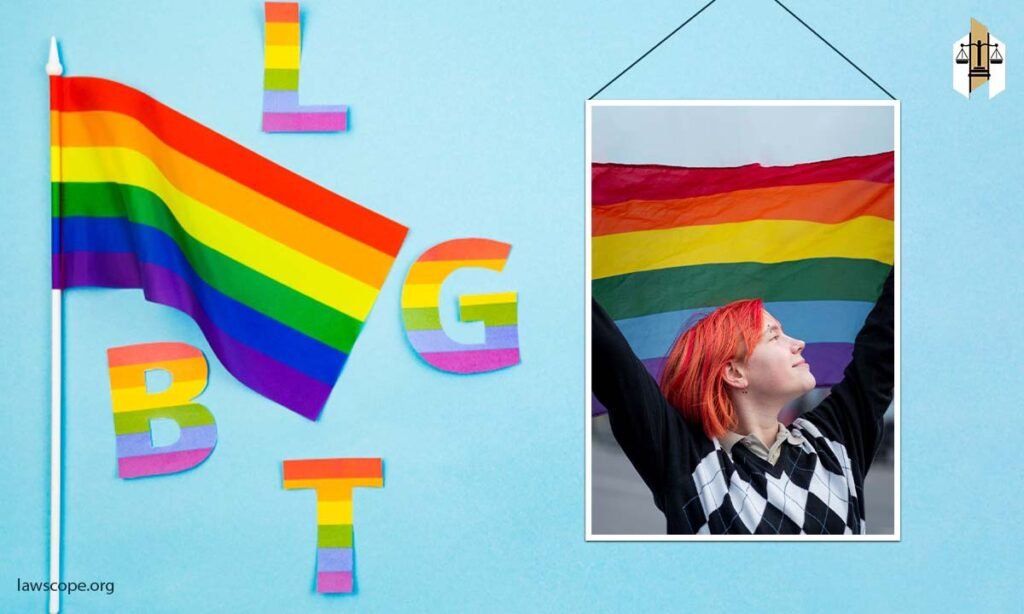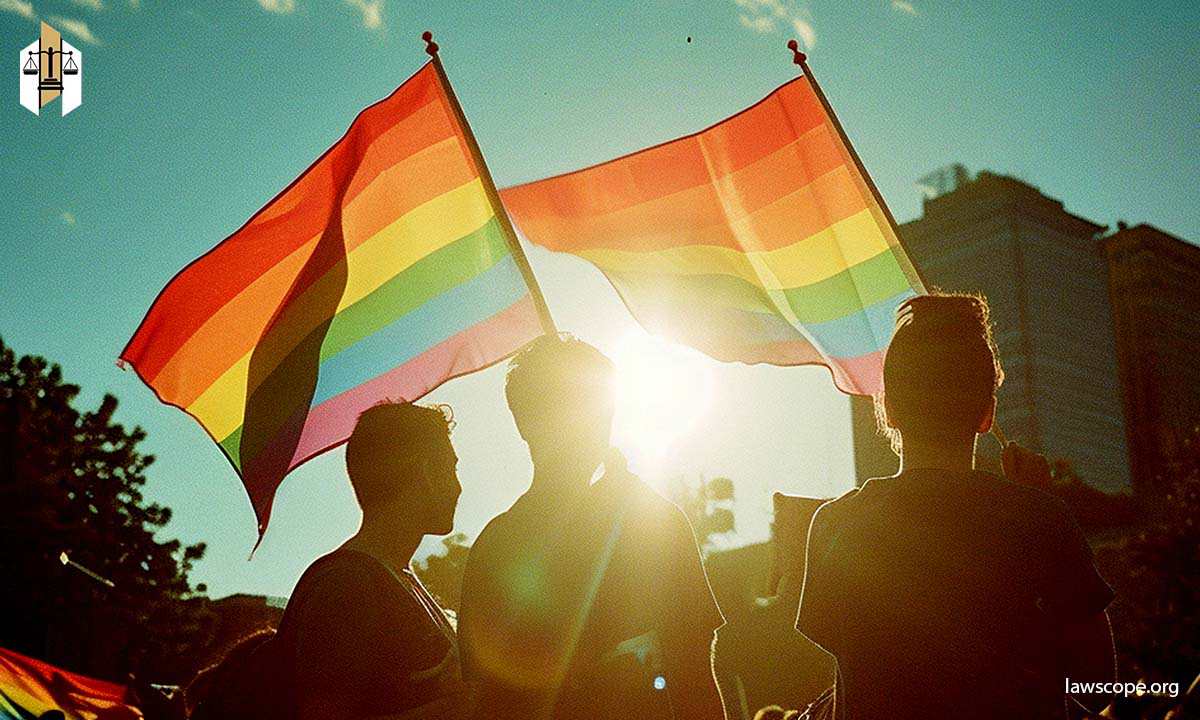
LGBT people are all over the world. These are a different set of people and are identified by the varying sexuality than the other usual people that fall under the genders male and female. All people globally have specific rights as defined in the constitution of a particular state or country. However, with the LGBT people, the scenario is quite different. However, LGBT rights in the United States are quite prominent.
Why are LGBT laws made in the US? Well, Like all other places around the world, indiscrimination is one of the main things that affect the LGBTQ+ community.
The laws aim to protect the rights of LGBT people and refrain them from falling victim to indiscrimination.
Take a moment to read till the end and discover the various laws related to the LGBTQ+ communities in the United States.
If you are someone from the community, you definitely need to know your rights well.
What Is LGBT / LGBTQ+ / LGBTQIA+?

LGBT or recently broadened to LGBTQ+ followed by LGBTQIA+, is an umbrella term that describes the section of people or community of people who are not usually a man or woman in its true sense.
LGBT is an acronym or abbreviation for the group of terms “lesbian, gay, bisexual, and transgender”.
It can mean anyone who is not a man or woman and doesn’t identify as one gender, instead of only those who identify as lesbian, gay, bisexual, or transgender.
Men and women are usually stated with the colors blue and pink respectively.
On the contrary, LGBTQIA+ communities all around the world are described as a rainbow community.
This is the only reason why the color chart includes all the seven colors of a rainbow.
What is the full form of LGBTQIA+?
LGBTQIA+ is a broad or umbrella term used to include various sexual orientations.
This includes Lesbian, Gay, Bisexual, Transgender, Queer (or questioning), Intersexual and Asexual respectively.
Now you may ask, Why, after all, do we put a ‘+’ sign at the end of the term?
The ‘+’ symbol is for those members who feel they don’t find themselves in the previously abbreviated terms: it is someone who feels they are not included.
It is an attempt to tell clients who they are in terms of sex and what they feel without any set letter or word.
The Professionals
Let us get to know how these terms can be simplified in LGBTQIA+.
- Lesbian (L): The word “lesbian” describes a female who’s interested in different girls romantically, emotionally, and bodily.
- Gay (G): The word “gay” means someone who feels physically, emotionally, or romantically attracted to humans of the equal gender, ideally men.
- Bisexual (B): The word “bisexual” describes someone who is interested in humans of more than one sex, gender, or gender identity.
- Transgender (T): “Transgender” is someone who’s one-of-a-kind from the gender they were born with. Transgender needs to be used as an adjective in preference to a noun or verb. you might have seen human beings born as a man reworking right into a girl or vice versa. this is what transgenders or trans human beings are.
- Queer (Q): Queer humans are folks who become aware of as unique genders, together with transgender, genderqueer, or non-conforming genders. In 2018, more than 12% of LGBTQ teens stated they had been not male or female, and nine% stated they had been neither male nor lady. The phrase ‘Q’ can also suggest asking questions about their orientation.
- Intersex (I): Intersex is a word used to describe a person who’s born with variations of their sexes or reproductive anatomy. There can be variations with reference to genitalia, chromosomes, hormones, internal sex organs, and/or secondary sex characteristics, along with pubic hair, breasts, facial hair, and so forth.
- Asexual (A): Asexual is someone who would not need to have sex with others. Celibacy is a preference no longer to have sex.
LGBT Rights In The United States: LGBTQ Laws Governing The Area
During the last couple of years, LGBT rights in the United States of America have advanced hastily. However, considering the acceptance and equality, the challenges are still there.
Here are some of the major LGBTQ law listings you must know.
1. Anti-Discrimination Laws:
A few states and localities have handed legal guidelines that guard LGBTQ humans from discrimination in employment, housing, public inns, and other regions.
2. Adoption and Parenting Rights:
LGBTQ people and couples have gained felony reputation and protections in adoption and parenting, although some states still impose barriers or restrictions based totally on sexual orientation or gender identification.
3. Citizenship:
US citizens who have foreign biological children may not be able to get US citizenship, which affects same-sex couples more than other couples.
In 2020, the US government stopped appealing in Kiviti v. Pompeo and Mize-Gregg v. Pompeo because Federal district court judges said it was illegal.
4. Employment:
Employment discrimination is when human beings are handled unfairly.
In June 2020, the USA ultimate court docket stated that being gay or bisexual isn’t always grounds for discrimination in employment under the Civil Rights Act of 1964.
Over 140 states and some federal laws have made sure that employees are protected.
As of June 2020, all persons who work for employers that employ more than 15 people are protected from discrimination based on their sexual orientation or gender identity.
5. Hate Crime Laws:
Matthew Shepard and James Byrd Jr. Hate Crimes Prevention Act, which was passed in 2009, expanded federal hate crime law to include crimes that are based on a victim’s sexual orientation or gender identity.
6. Healthcare And Medical Protections:
The Affordable Care Act (ACA) says that people can’t be treated unfairly because of their sexual orientation or gender identity in healthcare.
This means that LGBTQ people can get the same care and insurance as everyone else.
7. Housing:
The Office of Fair Housing and Equal Opportunity (FHEO) makes sure that all Americans have equal access to housing.
It has rules like “Equal Access” to make sure that all eligible people are included in federally assisted housing programs.
8. Marriage Equality:
After a big decision by the Supreme Court in 2015 called Obergefell v. Hodges, gay and lesbian couples can now get married and have the same rights and protections as heterosexual couples.
9. Military Service:
The repeal of the “Don’t Ask, Don’t Tell” policy in 2011 allowed gay, lesbian, and bisexual people to serve in the U.S. military without fear of being fired because of their sexual orientation.
10. Title IX Protections:
Title IX of the Education Amendments of 1972 prohibits discrimination on the basis of gender in educational institutions that receive federal funding. This means that LGBTQ students can be protected from being harassed or treated unfairly.
11. Transgender Rights:
While progress has been made in recognizing and affirming the rights of transgender people, issues like access to gender-affirming healthcare, legal recognition of gender identity, and protection from discrimination still remain areas of concern and advocacy.
Related Content: Uganda Anti LGBTQ Law: Impact on Rainbow Community’s Rights
Closing Lines
LGBT rights in the United States have become fair with the acceptance of the LGBTQIA+ communities.
Although there has been and still is some discrimination, but, most of it has loosened lately giving these communities people the scope of equal rights.
Which statement is true regarding LGBTQ?
All the statements and the laws mentioned in this article are true by all means.
How many anti lgbtq laws are there in the US?
Last year, 510 bills against LGBTQ people were introduced in state legislatures in the US.
According to the American Civil Liberties Union, this is a new record.
There were almost three times as many bills in 2022.
Thus, like enjoying a rainbow we need to embrace the orientations of people and keep them safe from discrimination.
You May Like Also:
- Can My Ex-Wife Claim Money After Divorce in The UK?
- Sodomy Definition in Law: Understanding and Enforcement
- Sexual Assault Lawyer: Addressing the Impact on Mental Health
- Sexual Harassment Attorney: Your Guide To Legal Protection and Justice
- Protecting LGBTQ+ Employees From Sexual Harassment: A Guide For Lawyers and Employers


